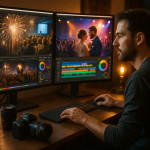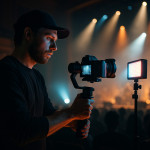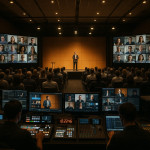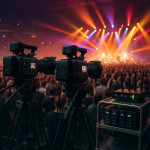Storyboarding corporate events: elevate attendee engagement through narrative
A detailed storyboard turns scattered event moments into a cohesive story that keeps every attendee focused, entertained, and eager to act. Discover proven narrative tactics, practical templates, and measurement methods you can apply to your next corporate gathering.
Why narrative beats logistics-only planning
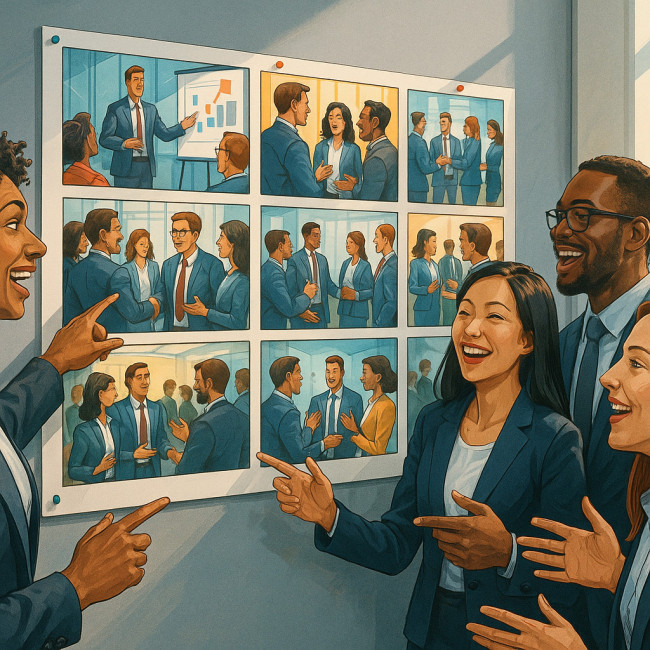
Traditional run-sheets list what happens and when. A storyboard for corporate events goes further: it frames each segment inside a beginning, middle, and climax that mirror classic storytelling. Attendees no longer drift; they anticipate the next chapter. Studies from event tech platforms show narrative-driven agendas lift session retention by 22 % and post-event survey scores by 18 %.
What exactly is an event storyboard?
An event storyboard is a visual timeline that links business objectives to audience emotions, on-site cues, and technical assets. It usually includes:
- Scene cards or slides that describe each moment.
- Desired emotional response (curiosity, trust, excitement).
- Key messages and calls to action.
- Supporting media, décor, or speaker notes.
- Logistics checkpoints: lighting, sound, camera angles.
Storyboard vs. classic agenda: key differences
| Aspect | Classic Agenda | Storyboard |
|---|---|---|
| Focus | Timing & tasks | Audience emotion & flow |
| Format | Spreadsheet rows | Visual frames or comic panels |
| Success metric | Stayed on schedule | Shifted belief or behaviour |
| Collaboration | Planner only | Planner + speakers + AV crew |
| Iteration speed | Slow | Drag-and-drop edits |
The 5-step framework to storyboard corporate events
1. Define a single narrative objective
Choose one transformative goal: inspire pre-orders, attract investors, or launch a CSR pledge. Decluttering objectives keeps the storyboarding corporate events process laser-focused.
2. Map the attendee journey
Plot arrival, registration, networking, main program, and exit. Attach an emotional state to each phase: from anticipation at check-in to empowerment during the closing keynote.
3. Outline memorable touchpoints
Use scene cards to sketch what attendees see, hear, and do. Add interactive video files for breakout polls or real-time quizzes. Align lighting cues and scent marketing to reinforce mood.
4. Align media and logistics early
Share the storyboard with AV partners, décor teams, and event videographers. Their feedback prevents last-minute tech clashes and guides camera blocking.
5. Test, iterate, and lock
Run a virtual walk-through. Refine weak transitions and confirm backup plans, such as gear redundancy strategies for live streams.
Case study: transforming a product launch into a hero's journey
Goal: drive 1 000 demo sign-ups for a SaaS platform. The planner framed the showcase as a hero's journey:
- Call to adventure: CEO short film shows market pain.
- Trials: live demo battles common obstacles.
- Reward: early adopters share ROI testimonials.
- Return home: attendees receive personalised trial links.
Result: Demo sign-ups hit 1 350 (35 % over target) and NPS jumped from 58 to 71.
Storyboard tools & templates
- Trello storyboard template with scene card labels.
- Miro journey-map canvas for cross-team edits.
- Slide deck grid: six frames per slide for fast pitching.
- AI voice-over preview to time speeches precisely.
- 15-question pre-production questionnaire that uncovers hidden tech needs.
Measuring success: metrics that prove narrative impact
Embed analytics from registration to post-event content. Key numbers:
- Session dwell time versus slide length.
- Live poll response rate.
- Social media mentions containing core message.
- Conversion rate on follow-up offers.
- Asset shelf life via the footage repurposing roadmap.
Quick storyboard readiness quiz
FAQ
- Do I need a designer to build an event storyboard?
- No. Simple slide grids or free online templates work, provided each frame states emotion, message, and logistics.
- How long should a storyboard be for a one-day conference?
- Around 25–40 frames. More frames help clarify micro-interactions like coffee-station signage.
- Can storyboarding corporate events help hybrid audiences?
- Yes. Define separate frames for on-site and virtual viewers, then sync transitions so both groups share plot peaks.
- What budget impact should I expect?
- Preparation time rises slightly (about 8 % in agency surveys) but savings from fewer live errors outweigh the cost.
- How early should I start storyboarding?
- Begin as soon as the event goal and venue are confirmed—ideally 10–12 weeks out for a 300-delegate summit.
Take the next step
Ready to elevate attendee engagement? Start drafting your first storyboard today and share it with one trusted partner. Your narrative-driven event is one frame away.
